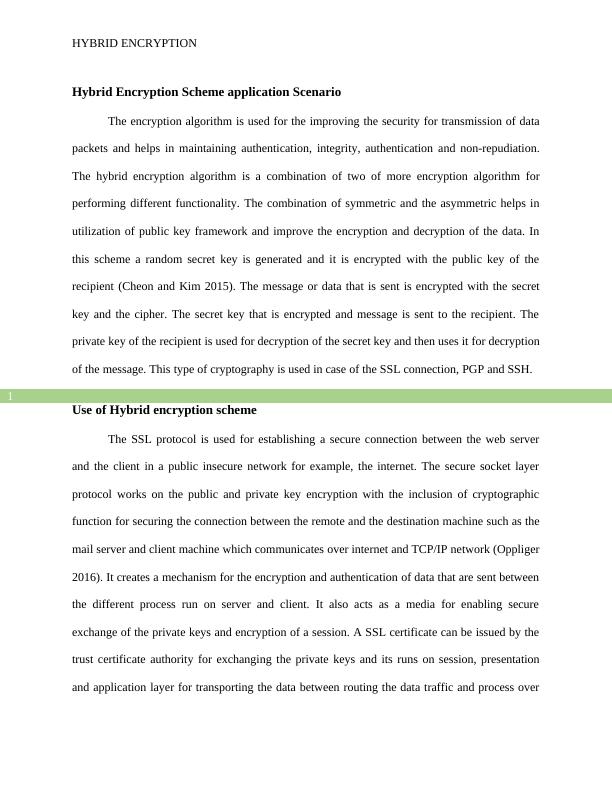Hybrid Encryption
4 Pages798 Words8 Views
Added on 2022-12-21
About This Document
The hybrid encryption algorithm is a combination of two or more encryption algorithms for improved security and functionality. It is used in the SSL protocol for establishing a secure connection between web servers and clients. This article analyzes and compares the SSL protocol with the DES algorithm based on security, performance, and usability.
Hybrid Encryption
Added on 2022-12-21
ShareRelated Documents
End of preview
Want to access all the pages? Upload your documents or become a member.
SSL-TLS VPN Technologies
|7
|1448
|24
SSL Handshake: A Process for Secure Communication between Client and Server
|5
|774
|344
Cryptography and Security Protocols for Data Protection - Desklib
|6
|1420
|320
Encryption Symmetric Key Encryption
|9
|2853
|351
SSL/TLS VPN Technologies for Secure Network Connection
|8
|2000
|419
Introduction to Information Assurance and Information Security Assignment 2022
|11
|1301
|11


